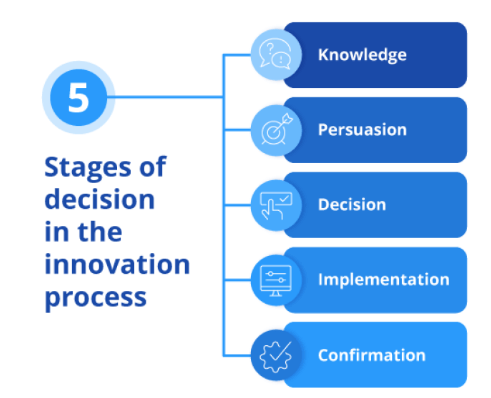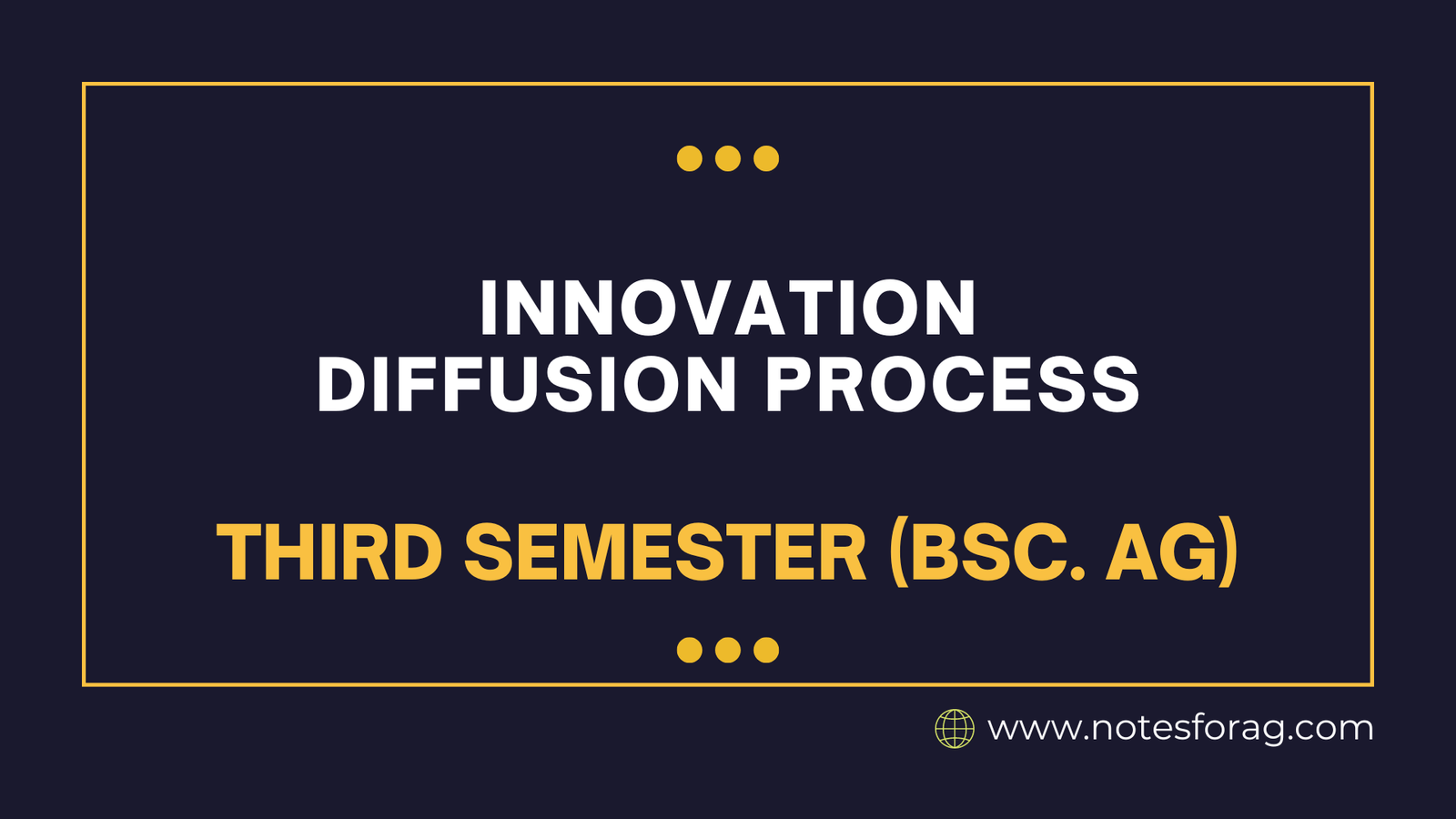The innovation diffusion process defines how a new concept, product, or technology spreads across a population over time. It consists of several stages-awareness, appraisal, trial, and adoption—in which individuals or organizations decide whether to accept the innovation. People are divided into categories such as innovators, early adopters, early majority, late majority, and laggards, each having a different inclination to embrace novel ideas. Perceived advantage, compatibility with established values, and ease of use all have an impact on the speed and scope of dissemination. This method explains how inventions gain widespread acceptance and adoption in society.
Table of Contents
Introduction to Innovation Diffusion
Innovation diffusion is an important concept in understanding how new ideas, goods, or technologies spread and are adopted in society. Innovation diffusion, defined as the process by which an innovation is communicated over time among participants in a social system, is critical in a variety of areas such as technology, healthcare, and education. Stakeholders can improve the efficiency and efficacy of their implementation strategies by investigating how and why creative solutions spread across various industries.
The relevance of innovation dispersion resides in its ability to rapidly modify existing environments. Rapid adoption of new software or hardware solutions, for example, in the technology industry, can dramatically alter business operations and consumer behaviour. In healthcare, the adoption of innovative medical techniques, treatments, or technologies can lead to better patient outcomes and organizational efficiencies. Meanwhile, in the classroom, new teaching approaches and tools can improve learning experiences and outcomes. Thus, understanding innovation diffusion provides industry leaders with the information they need to properly harness innovative breakthroughs.
Stages of the Innovation Diffusion Process

The innovation diffusion process has five important stages: knowledge, persuasion, decision, implementation, and confirmation. These stages indicate the transition from early awareness to full-scale acceptance and utilization by potential adopters. Each stage is influenced by a number of psychological and social elements that are critical to the adoption of innovations.
The first stage, Knowledge, includes a human being aware of an innovation and understanding how it works. At this point, knowledge dissemination is critical, since potential users must understand the fundamentals of the invention. For example, when smartphones were originally released, many individuals did not realize their potential beyond basic telephony. Public protests and media coverage were critical in informing customers about the various features and benefits of smartphones.
In the Persuasion stage, people form opinions about the innovation. This stage is largely influenced by social factors such as peer pressure, media influence, and projected adoption benefits. For example, social media platforms gained popularity as early adopters shared their positive experiences, convincing others to join by emphasizing connectedness and communication benefits.
The following stage is Decision, in which people choose whether to adopt or reject the innovation. Personal preferences and risk perception frequently influence decision-making. People assess the potential advantages against the risks and expenses associated with implementing the innovation. For example, potential adopters of electric automobiles may weigh environmental benefits against worries regarding charging infrastructure and vehicle range.
Following a positive decision, the Implementation step begins. During this stage, the individual starts implementing the idea. Real-world applications and trials allow to fine-tune usage strategies and integrate innovation into daily practices. For example, widespread adoption of cloud computing by enterprises required lengthy periods of trial and error before it was fully integrated into IT operations.
Finally, during the Confirmation stage, the individual seeks reinforcement for their decision to adopt. This stage combines social reinforcement and continual evaluation of the innovation’s performance. One example is the use of wearable fitness trackers; users frequently seek validation from peer groups and monitor their health indicators to confirm the usability and benefits of their decision.
Factors Influencing Innovation Adoption
Five major factors commonly influence adoption rates: relative advantage, compatibility, complexity, trialability, and observability.
Relative advantage is the degree to which an innovation is judged to be superior to the idea it replaces. Innovations that provide considerable gains are typically accepted more quickly. Compatibility refers to how well the innovation aligns with the values, previous experiences, and needs of potential users. Innovations that integrate seamlessly with users’ existing systems and practices have a higher adoption rate.
Complexity reflects how difficult the innovation is to understand and apply. Simpler, user-friendly inventions are more easily accepted because they present fewer hurdles to potential users. Trialability refers to the degree to which an idea can be tested with on a limited scale. The opportunity to test an idea lowers uncertainty, encouraging more people to take the first step. Finally, observability refers to the visibility of the innovations’ outcomes. When people can easily see the benefits of an innovation, it is more likely to be adopted.
Aside from these characteristics, the sort of innovation decision—whether optional, communal, or authority-driven—is also important. Individuals can accept innovations at their own discretion through optional decisions, but collective decisions require group consensus and authority decisions are mandated by those in power.
The communication channels used to communicate information have a considerable impact on adoption. Effective channels, such as mass media and interpersonal networks, raise knowledge and understanding of the innovation. Furthermore, the social system through which the innovation is communicated influences its adoption. Social structures, customs, and relationships all influence how quickly and widely an innovation spreads.
Importantly, the influence of change agents and opinion leaders should not be ignored. These influential people use their credibility and social influence to help introduce and adopt new inventions. On the other hand, impediments to innovation adoption, including as resistance to change, a lack of resources, and insufficient support, must be addressed to ensure successful adoption. Mitigation measures include providing knowledge and support, presenting comparative advantages, and offering trial opportunities.
The innovation diffusion process is commonly used in marketing, technological adoption, and public health to forecast and explain the spread of new ideas and products. It is also the foundation for understanding phenomena like viral marketing and new technology uptake.
Frequently Asked Question
What is the innovation diffusion process?
The innovation diffusion process describes how a new concept, product, or technology spreads across a population over time, from early awareness to broad use. It includes several levels and classifications of adopters.
What are the key stages of the innovation diffusion process?
The process typically includes five stages:
Knowledge (awareness of the innovation),
Persuasion (forming an opinion),
Decision (adopting or rejecting),
Implementation (putting the innovation into use), and
Confirmation (reinforcing the decision to continue using the innovation).
Related Articles

